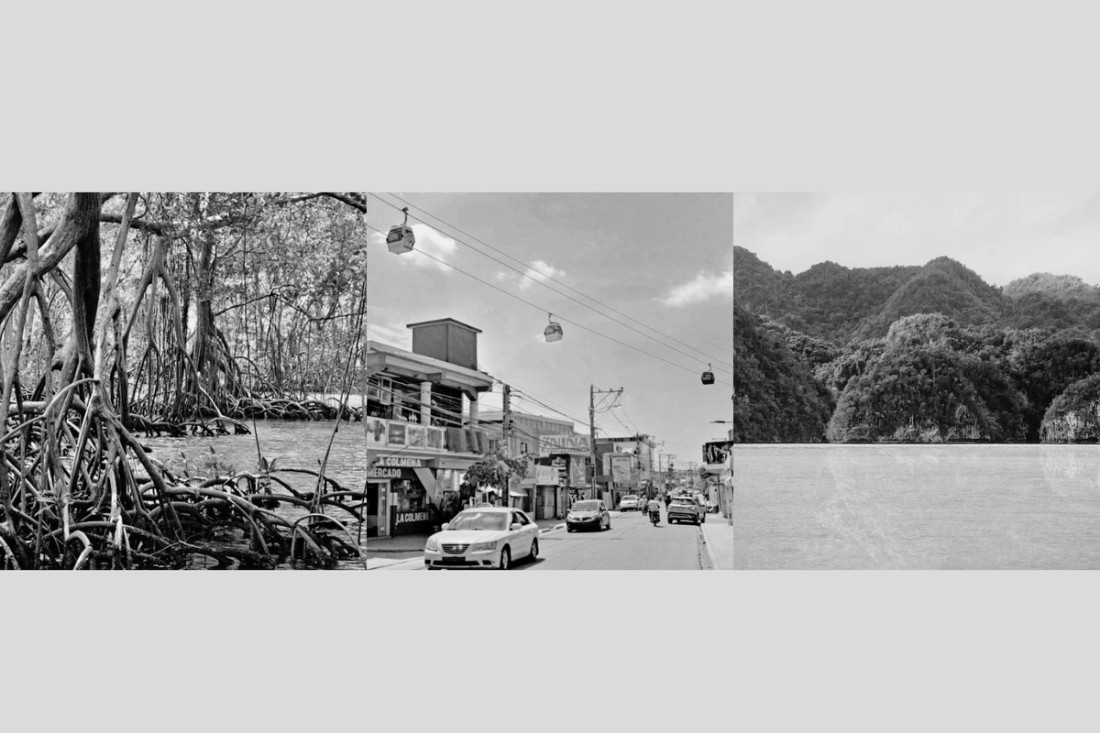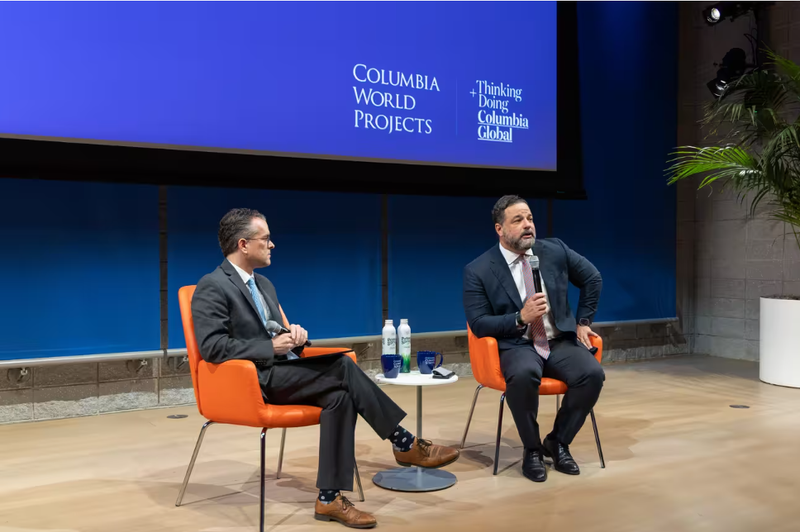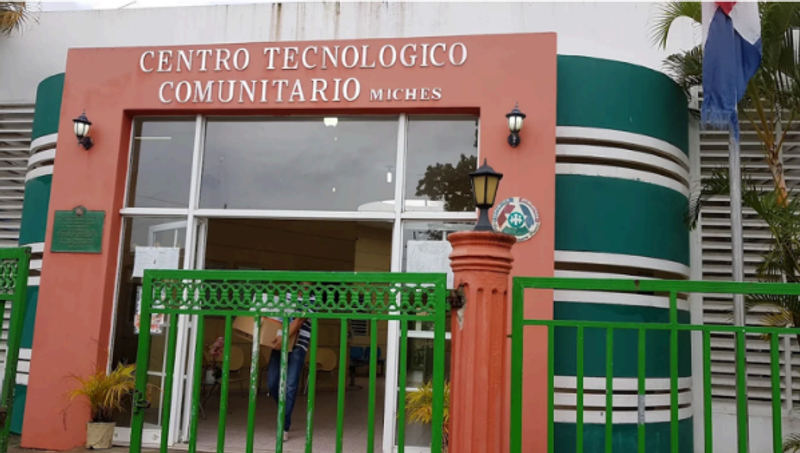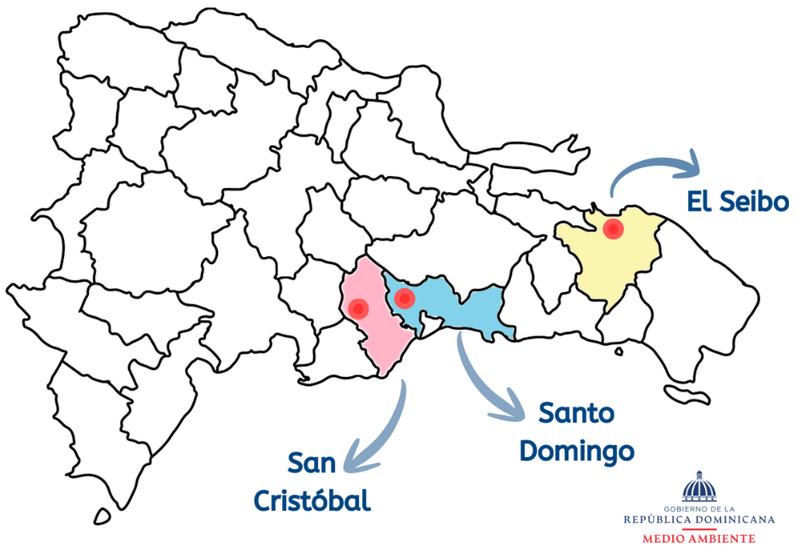Dominican Republic Includes Resilience Centers in National Plan

The island nation's environmental minister on how community resilience centers fit into his commitment and plans for climate change mitigation.
Hurricanes are stronger, droughts are longer, and seas are rising. The Dominican Republic contributes only 0.1% of global emissions, yet faces some of the greatest risks of the climate crisis.
At the center of the government’s response is Minister of Environment and Natural Resources, Armando Paíno Henríquez Dajer. He has been driving efforts to bring evidence-based, community-led ideas into national policy. During NYC Climate Week, he joined Columbia World Projects and the Climate School for an event, underscoring his commitment to connecting evidence to policy to action.
For Minister Henríquez, climate change mitigation must rest on both sound data and local voices. "There’s no national policy that a government can apply effectively if we don’t involve the communities," he said. "They are the ones that can actually work locally and execute the changes and the actions that are so much needed."

The architecture of resilience
With support from Columbia World Projects, faculty from the Columbia’s Graduate School of Architecture Planning and Preservation and Mailman School of Public Health worked alongside Dominican academics, community leaders, and government officials to design a blueprint for a community resilience center — a local hub meant to strengthen Dominicans’ ability to prepare for, respond to, and recover from climate disasters.
The purpose of such centers is to empower residents with ongoing education and training, provide coordinated emergency response during crises, and support recovery with information and resources.
When the project team presented the blueprint to the government of the Dominican Republic, Minister Henríquez immediately recognized its potential. "When you have a center in the community, a resilience center in the community that is visible and supportive of residents’ needs, it becomes the source of reliable information that people need to know," he said. "It also helps us a lot with effective implementation of our policies."
From concept to commitment
The government of the country has now committed to integrating resilience centers into its Eco Héroes Resilientes program. Rather than establish new infrastructure, it is embedding them into existing community technology centers, making the rollout faster and more cost-effective.
Minister Henríquez pointed to this efficiency: "It’s a way of being more cost-effective by having two programs in the same location. Because it’s already been built, we just have to adapt it to the new reality we face."
"At Columbia World Projects, we’ve seen that our best bet to create lasting change is when governments adopt and integrate initiatives that we have initiated and supported into their own agenda, particularly at the national level," says Sarah Silliman, Associate Director of Project Management at CWP. "It exponentially increases the potential impact, moving the benefits from one community to potentially reaching the entire country."

A strong regional voice
The Dominican Republic is also assuming a leadership role in the region. "Climate issues are not local issues," Minister Henríquez said. "We need to work as a group, as a region, to find the solutions." He pointed to joint work with Mexico on the growing threat of sargassum — massive seaweed blooms that wash onto Caribbean beaches, harming marine life and threatening the tourism industry — and to collaboration with Panama on the Nature Pledge, a regional effort to strengthen conservation commitments ahead of COP30.
Partnerships with academic institutions are equally critical. "Countries like us need support from the scientific and the academic communities," Minister Henríquez said. "Government cannot do all the work. Collaboration with researchers is needed."
"Ideas have power when they move from concept to action," said Wafaa El-Sadr, Executive Vice President at Columbia Global. "The Dominican Republic’s commitment to investing in making vulnerable communities more resilient is a powerful example of how bold thinking, grounded in evidence and guided by community voices, can transform the way a nation prepares for the future."
Racing against the climate clock
The first resilience hubs are being planned for the town of Miches in El Seibo, the community of Los Alcarrizos in Santo Domingo, and Los Cacaos in San Cristóbal. In more remote areas, where a physical hub may not be possible, the resilience center model will be adapted into radio-based communication networks — linking communities through early warning systems and coordinated disaster response. For the Dominican Republic, it marks a turning point: moving from project design to a nationwide system of resilience.

As the program expands, the Ministry of Environment is evaluating new locations for future resilience centers. Monte Cristi, Dajabón, and Valverde each face distinct risks, from droughts and floods as well as coastal erosion. The Eco Héroes Resilientes program also looks beyond climate impacts to consider other threats, such as earthquakes and tsunamis, and its workshops will prepare communities for the full spectrum of risks to Dominican livelihoods.
And for Minister Henríquez, urgency and optimism go hand in hand. "The climate crisis is real and we need to continue working and trying to be more resilient and to adapt to this new reality," he said. "The human race has faced big planetary challenges over its history and we’ve been successful. So we have to be optimistic. Each and everyone of us must do their part in order for us to save our planet."